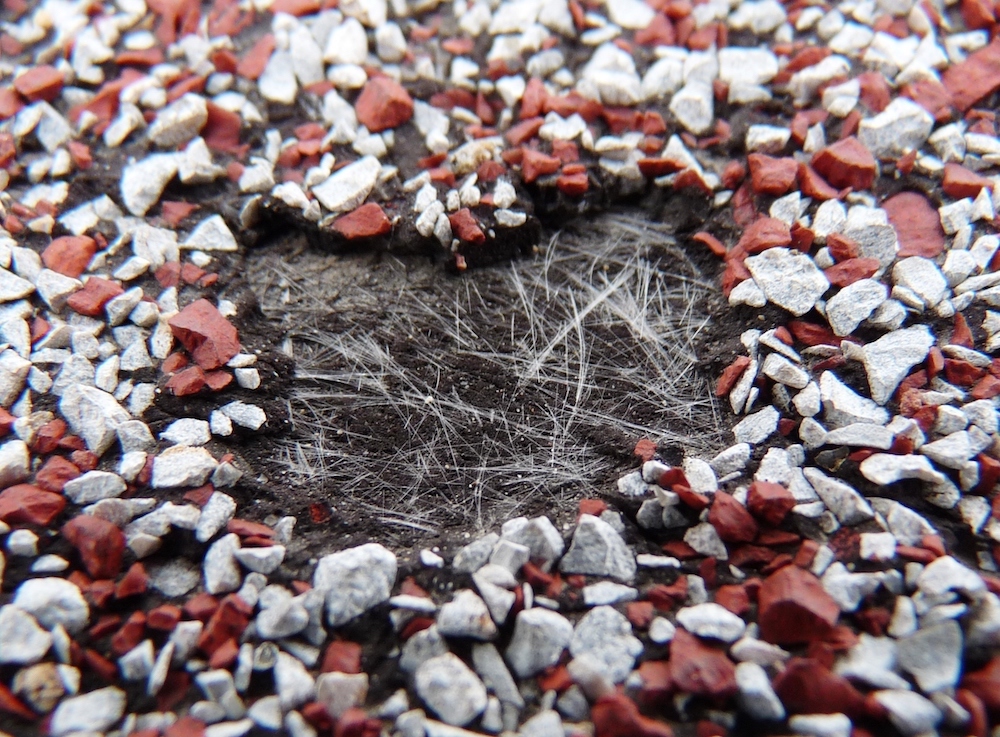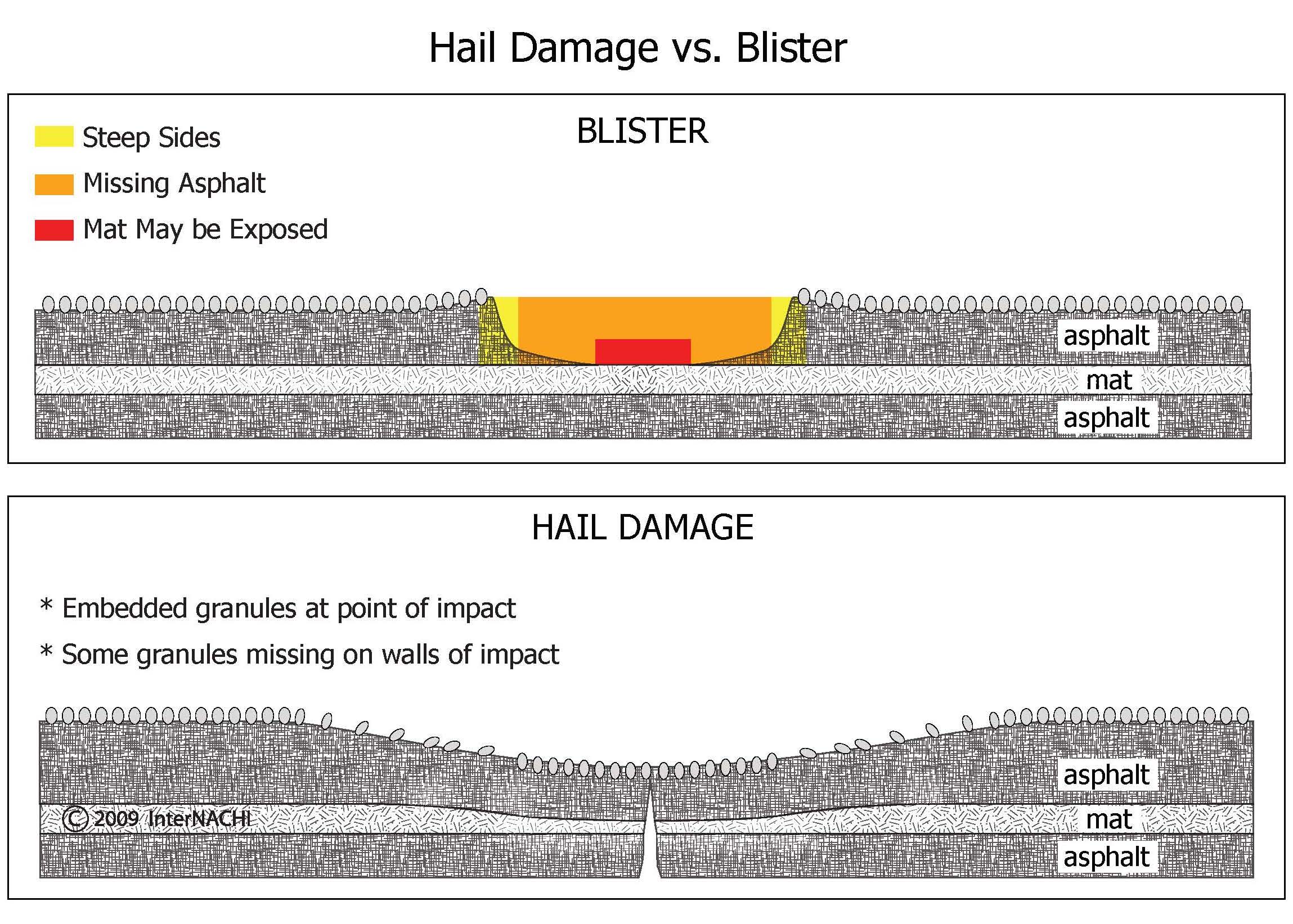

Blister on the left, hail damage on the right
Blisters are typically small, steep-sided craters measuring a quarter-inch (6mm) or less in diameter with no granules visible in the crater. Typically asphalt shingles only blister where the exposure conditions on the roof include one or more of the following:
- Poor or inefficient ventilation causing the shingles to reach excessive temperatures (over 60°C); MOST COMMON
- Wet shingles - shingle not properly protected prior to application, causing moisture to be entrapped within it, leading to blisters;
- Wet roof boards - sudden moisture release into shingle;
- Resin dripping from trees - softens the asphalt, allowing blister to form;
- Too much solvent-based asphalt adhesive - applies particularly to roofs covered with low slope shingles - when manually sealing shingles, ensure that the spot of adhesive is no larger than the size of a quarter;
- Use of an incompatible adhesive or use of an adhesive mixed with gasoline, turpentine or other solvents (some caulking materials contain 20– 50% xylene and benzene, which can soften the asphalt in the shingles very rapidly);
-Shaded areas suddenly exposed to hot sun each day; or
-Roof areas receiving both direct and reflected heat from the sun.
Hailstrikes often have granules still visible in the damaged area. If the shingles were warm when the hailstrike occurred, granules are typically pressed further into the asphalt. If the shingles were cold when the hailstrike occurred, some granules may be missing, but the excavated portion will not be uniform in depth and appearance, as with blister damage. Blisters are typically flat across the bottom of the excavated area, often with mat visible at the bottom. Hail strikes will have sloped bottoms reflecting the shape of the ice sphere that caused the damage.


Blisters before the caps weathered away
Learn more about how to tell blisters from hail damage from InterNACHI's Mastering Roof Inspection series at:
